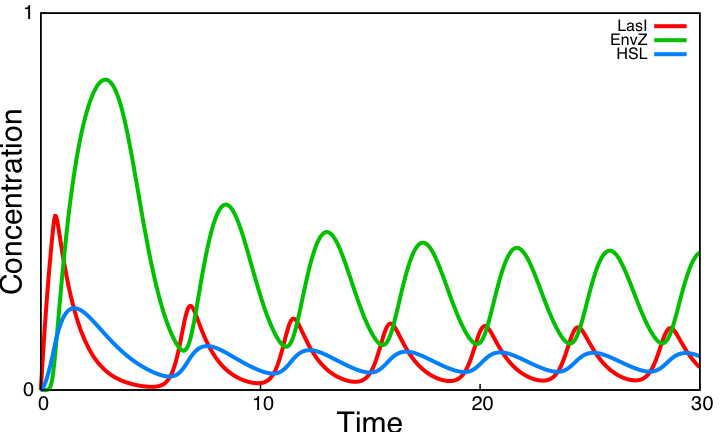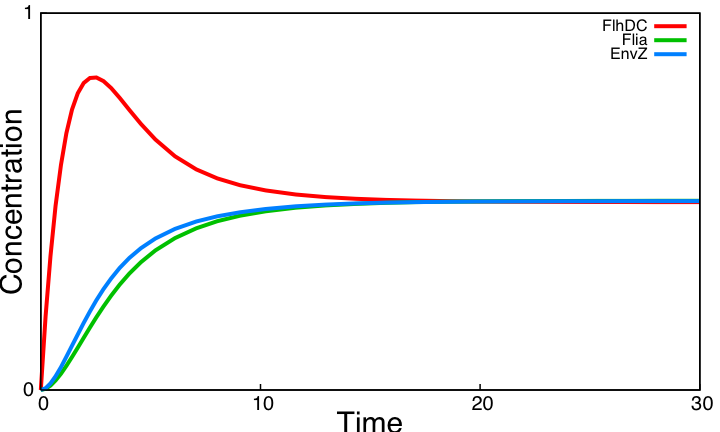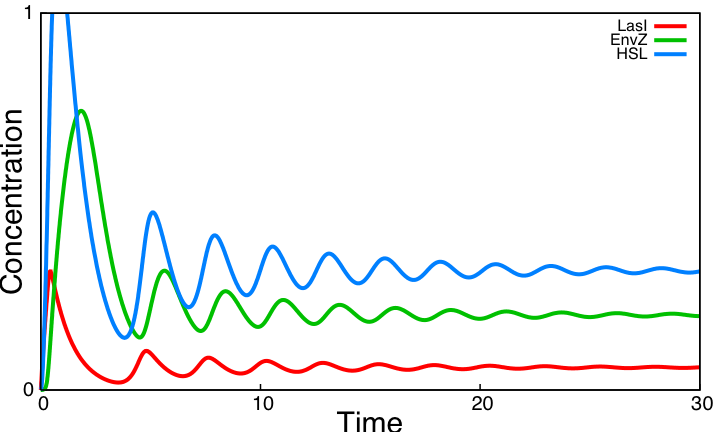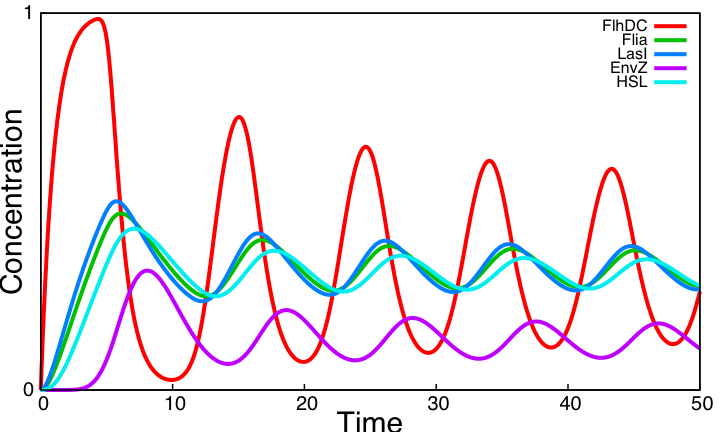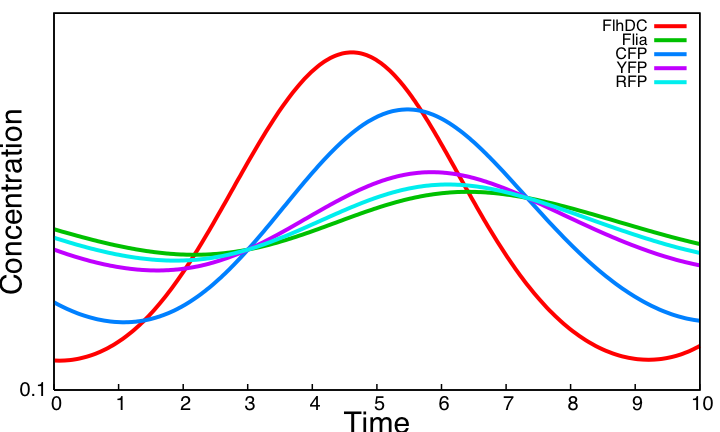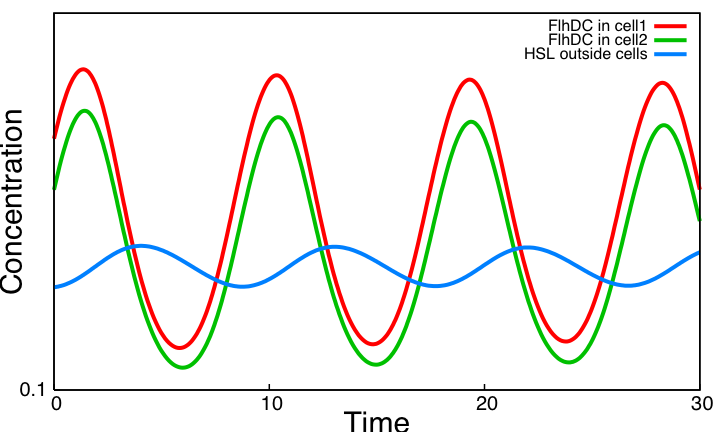Team:Paris/Analysis/Model2 Analysis
From 2008.igem.org
|
Model Analysis
Model AnalysisHSL mediated coupled oscillatorsParameter searchIn this system we rely on kinetic parameter values taken from the literature. However, three kinetic parameters remain unknown : HSL production rate (βHSL), the threshold value of HSL above which EnvZ is expressed (θHSL) and the threshold value of EnvZ above which lasI is inhibited (θEnvZ). We assume, as [2] did, that the HSL loop considered alone is functional and thus look for values of these three parameters such that concentration values of species in this loop oscillate. For the HSL production rate we find that HSL time scale has to be similar to lasI time scale. As HSL is produced only in cells but is degraded inside and outside cells, the following relation where c is the proportion of the total volume occupied by cells is required :
Besides, we observe that the threshold value of EnvZ needs to be low and that the loop is functional for any threshold value of HSL. For three parameter values validating these requirements (βHSL=16, θEnvZ=0.1, θHSL=0.5), the HSL loop alone has the following behavior : For all forthcoming simulations where the interactions in this loop aprear, we make use of the parameter values deducted from this parameter search. Coupling resultsThe two modules of the bimodular system are the the negative loop involving HSL, and the core system. These two modules are coupled by EnvZ. The HSL module is functional whereas the core system is not. We compare below the behavior of the core system alone to the behavior of the system coupling these two modules.
HSL mediated simple oscillatorOscillationsWe consider now the unimodular system. Its kinetic parameter values are obtained from the literature and from the parameter search carried above for the three unknown parameters in common with the HSL module. Here is the simulation obtained. This system shows sustained oscillations. It is worth noticing that this is obtained without removing the auto-activation loop on Flia and the activation of lasI by FlhDC even though these two interactions hamper the oscillatory behavior as shown in the analysis of the core system. FIFOAll FIFO related interactions of the core system remain in the unimodular system. The behavior is therefore the same as observed in the core system. But whereas one had to impose FlhDC as a step function in the core system to be able to observe the FIFO behavior, FlhDC oscillatons are here inherent to the dynamics of the system. Below is a close-up view of FIFO reporters concentrations for one period of the unimodular system : SynchronizationTo assess synchronization capabilities we mix two population of cells in the chemostat, one having a slightly higher degradation rate of all proteins. This entails different period and amplitude of oscillations. However, HSL oscillations outside cells enable oscillations to remain synchronized. Simulations reveal parameter η is a key parameter : it controls the pace at which HSL diffuses between cells and the environment. A low η value disrupt both synchronization capabilities and the oscillatory behavior. With the value η=505 taken from [2] oscillations are sustained and synchronized across cell population. ConclusionThe above simulations imply that the HSL mediated simple oscillator system should be preferred as it provides sustained oscillation as opposed to the bimodular system. Note that this result not only shows that the system can work for some arbitrary kinetic parameter values. As almost all parameters are taken form the literature, it reveals that for biologically compatible parameter values, the system should work. In addition a population of cells implementing the simple oscillator system can be synchronized by quorum sensing. |
 "
"

